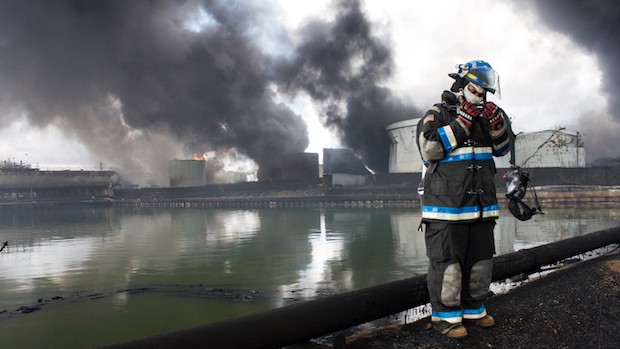A Rutgers University study published on April 2, 2021 in the International Journal of Environmental Research and Public Health has concluded that volunteer firefighters have higher levels of “forever chemicals” in their bodies than career firefighters or the general public.
This study, titled, “Prevalence and Predictors of Per- and Polyfluoroalkyl Substances (PFAS) Serum Levels among Members of a Suburban US Volunteer Fire Department,” is important whether or not a department is providing resources for members to stay safe within OSHA and NFPA requirements.
The “forever chemicals” are per- and polyfluoroalkyl substances, commonly knows as “PFAS.” PFAS are, according to the study, “a global environmental and health concern due to their ubiquitous presence in the environment, tendency to bioaccumulate, and the growing evidence of adverse human health effects at very low levels of exposure.”
Because they are thermally stable and have non-stick surfactant properties, PFAS are used in consumer products including food packaging, cookware coatings, furniture and carpeting. Exposure to humans can incur from ingestion, inhalation and absorption through the skin. Historically, turnout gear has been treated with PFAS to provide water and stain resistance.
Exposure has been associated with a range of illnesses such as cardiovascular disease, immune suppression, kidney disease and endocrine disruption. On top of that, PFAS are thought to be a carcinogen for kidney and testicular cancers.
According to the study, most research on PFAS was conducted on career firefighters, but volunteer firefighters make up about two thirds of firefighters in the US. This study was meant to see if there is a difference between career and volunteer firefighters and the general public.
The Rutgers study compared concentrations of PFAS in career and volunteer firefighters and found that volunteers had higher concentration of some PFAS than career firefighters or the general public.
The author of the study speculated: “Volunteer firefighters train for and perform the same tasks as career firefighters, but often with less protection and risk reduction. They are always on-call, and so could potentially accumulate more years of firefighting-related exposures than their career counterparts.”
In addition, the study found that the levels of perfluorodecanoic acid were found in 80 percent of the volunteer firefighters, but in virtually no one in the general public.
On an institutional level, this study calls for possible changes in turnout gear as well as legislation banning these “forever chemicals,” and on an individual level it is good evidence that firefighters should wash their gear even if it doesn’t look dirty. NFPA 1851, 2020 edition, covers this. It provides that two “advanced cleanings” are required each year, and also the gear is exposed to products of combustion.
State Senators Pete Harckham and Todd Kaminsky co-sponsored a bill which passed the State Senate which would ban flame retardants containing “forever chemicals” in furniture, mattresses and electronic enclosures. The bill is now at the State Assembly and FASNY has asked members to email members of the Assembly Environmental Conservation Committee to support the legislation.






